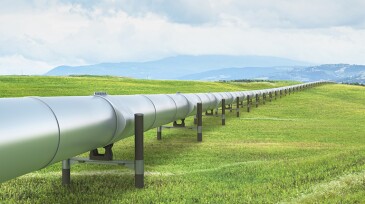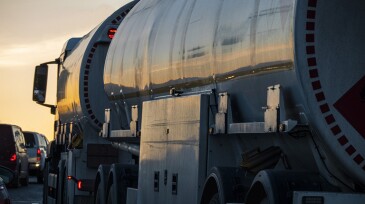Safety
This study ascertains the capital expenditure and operating expenditure associated with the reuse of existing facilities, specifically regarding a carbon capture and storage project being prepared in South Korea.
Sponsored
Advance your career with the new Pipeline Engineering Program at the Technical University of Leoben, a 5-month course combining on-campus and online learning, integrating industry expertise, engineering practice, and future-ready skills for professionals in oil, gas, and emerging energy systems.
A resilience-based approach to safety was the focus of a panel of experts at the 2025 SPE Annual Technical Conference and Exhibition in Houston.
-
The complete paper provides tools useful for decision-makers to prevent adverse pipeline incidents caused by human action, poor facility performance, accidents, emergencies, and external events.
-
Delivering clear and consistent communication is a core component of crisis-response management. The complete paper describes an oilfield service company’s crisis-communication strategy implemented in response to a hurricane devastation of an area where more than 12,000 employees live and work.
-
Behavior-based programs have proven effective in reducing workplace incidents because safety becomes a collective responsibility shared by all employees. In the complete paper, the authors describe a program known as Human Performance.
-
Poor health and safety behaviors pose a challenge to drivers of trucks and commercial vehicles and to the safety of motorists and pedestrians. In Nigeria, an operator partnered with medical personnel to demonstrate the positive effects of a human performance and care agenda on driver performance, engagement, behavior, and road safety.
-
At a time when the world is dealing with the COVID-19 virus, it is a safe assumption that we are frequently thinking about our health. This selection of technical papers highlights the topic as addressed at the 2020 SPE Virtual International Conference on Health, Safety, Environment, and Sustainability.
-
Remapping of conventional causes of accidents with human-factors guidelines highlighted consistent patterns in the causation of incidents where multiple human-factors criteria were formerly overlooked. This approach has led to changes in incident investigation, putting a focus on causes and providing efficient corrective actions to avoid the recurrence of incidents.
-
The authors’ objective is to understand further how technology can support the prevention of driver fatigue and to explore driver beliefs related to fatigue and the technology designed to assist in fatigue avoidance.
-
The swirling, sea-surface fire near the Ku-C platform was extinguished after several hours.
-
The international petroleum industry has been in the spotlight after a gas leak sparked the underwater “eye of fire” boiling to the surface in the Gulf of Mexico and a large blast at a Caspian Sea oil and gas field.
-
The introduction of artificial intelligence (AI) cameras on marine vessels is planned to embrace a smarter automated analytic response and reporting culture, which, in turn, is expected to lead to increased safety oversight of critical offshore operations in areas that have been determined to have a lack of physical safety coverage.













